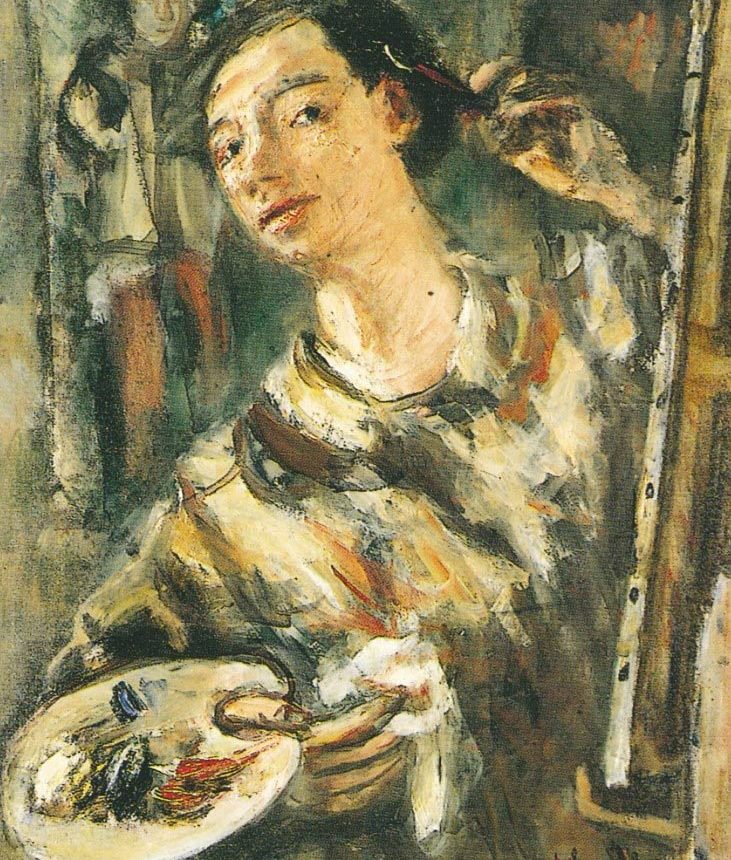Maurice MENDJIZKY
January 3, 2019Georges MERKEL
January 3, 2019Sigmund MENKÈS
LWOW/LEMBERG (GALICIA) 1896 – NEW YORK 1986
According to Sigmund Menkes, who was the oldest of a family of six, he spent his childhood in a “sad environment.” When he was sixteen, he enrolled in the Institute of Decorative Arts in Lwow (Lemberg), where he met Alfred Aberdam. He worked as a building painter in order to earn his living. At the same time, he studied the fresco technique and worked on the restoration of Orthodox churches. “I had a ceiling all to myself and I could paint whatever I wanted.” In 1919, Menkes devoted more time to his painting and enrolled in the School of Fine Arts in Krakow.
In 1922, he studied at Alexander Archipenko’s studio in Berlin, where he met Weingart and spent the whole year with him. He arrived in Paris in 1923 and settled in Montparnasse, where he rented a room in a building that was partially turned into a hotel for artists: l’Hôtel Médical. He shared his room with Weingart for two years. Many artists lived there, including Ephraim Mandelbaum, Eugene Zak, and Marc Chagall among others. He spent time at the café La Rotonde and later at Le Dôme. Later in 1923, he met Léon Weissberg at La Rotonde. Menkes invited him to spend his first night in Paris at his hotel room. After Marcel Slodki, Menkes settled in the Douanier Rousseau’s former studio at 2 bis rue Perrel. When Menkes left Paris in 1935, he turned over the studio and all its furniture to Weissberg, who settled down for good. In Montparnasse, Menkes was famous for his humor.
From 1924, following a trip to Lwow where he went to look for financial help, he met an art dealer who supported him and regularly bought his work. Sigmund Menkes, Alfred Aberdam, Joachim Weingart, and Léon Weissberg made up the group of Four. In the end of 1925, the exhibition “the Group of Four” was held at Jan Sliwinski’s gallery Au Sacre du Printemps. Around the same time, Menkes painted a portrait of his friend Léon Weissberg. He married Stanislawa Théodora Weiss, also known as Stasia. Stasia, who was very beautiful, posed for her husband as well as for Léopold Gottlieb and Raymond Kanelba. Menkes traveled in the south of France and fell in love with the Toulon area. However, he experienced a difficult life in the early times, and therefore decided to return to Poland. He moved back to Paris that same year and said that this time, he meant “to stay there at all costs.” From 1930, he exhibited his work in Paris, Lwow, Toronto, and New York. In 1934, collector Paul Guillaume awarded a prize to Menkes’ work at the jury of the Bernheim Gallery’s exhibition. Menkes did not receive it because of his origins and his nonnaturalization.
In 1935, he left for New York with regrets. He returned to Paris three times before 1939, when he moved to the United States for good. He only left America for a few trips when he visited Israel his beloved Montparnasse in Paris and Poland in 1950. Sigmund Menkes died at his home in Riverdale, New York, in August 1986. His last wish was for his ashes to be scattered in Israel.
Stories of Jewish Artists of the School of Paris 1905-1939
FRENCH-ENGLISH
Capitale des arts, le Paris des années 1905-1939 attire les artistes du monde entier. De cette période de foisonnement, un terme est resté, celui d'Ecole de Paris, qui recouvre une grande diversité d'expression artistique. Dans ce brassage dont Montparnasse est le creuset, un groupe se distingue : celui des artistes juifs venus de Russie, de Pologne et d'Europe centrale. Si leurs styles sont variés, un destin commun les rassemble : ils fuient l'antisémitisme de leur pays d'origine. Certains ont connu la célébrité dès les années 1920, tels Soutine, Lipchitz ou Chagall. D'autres n'ont pas eu le temps ou la chance d'y accéder. Près de la moitié a péri dans les camps de concentration nazis.
From 1905 to 1939, Paris attracted artists from all over the globe as the capital of the art world. This period of artistic proliferation became known as the School of Paris, and includes a great diversity of artistic expression. Within the teeming art world centred on Montparnasse, one group set itself apart: Jewish artists from Russia, Poland, and Central Europe. Although their styles were diverse, they shared the common fate of fleeing anti-Semitic persecutions in their home countries. Some became famous in the 1920s, such as Soutine, Lipchitz, and Chagall, while others did not have the time or the luck to gain renown. Nearly half of these artists died in Nazi concentration camps.





